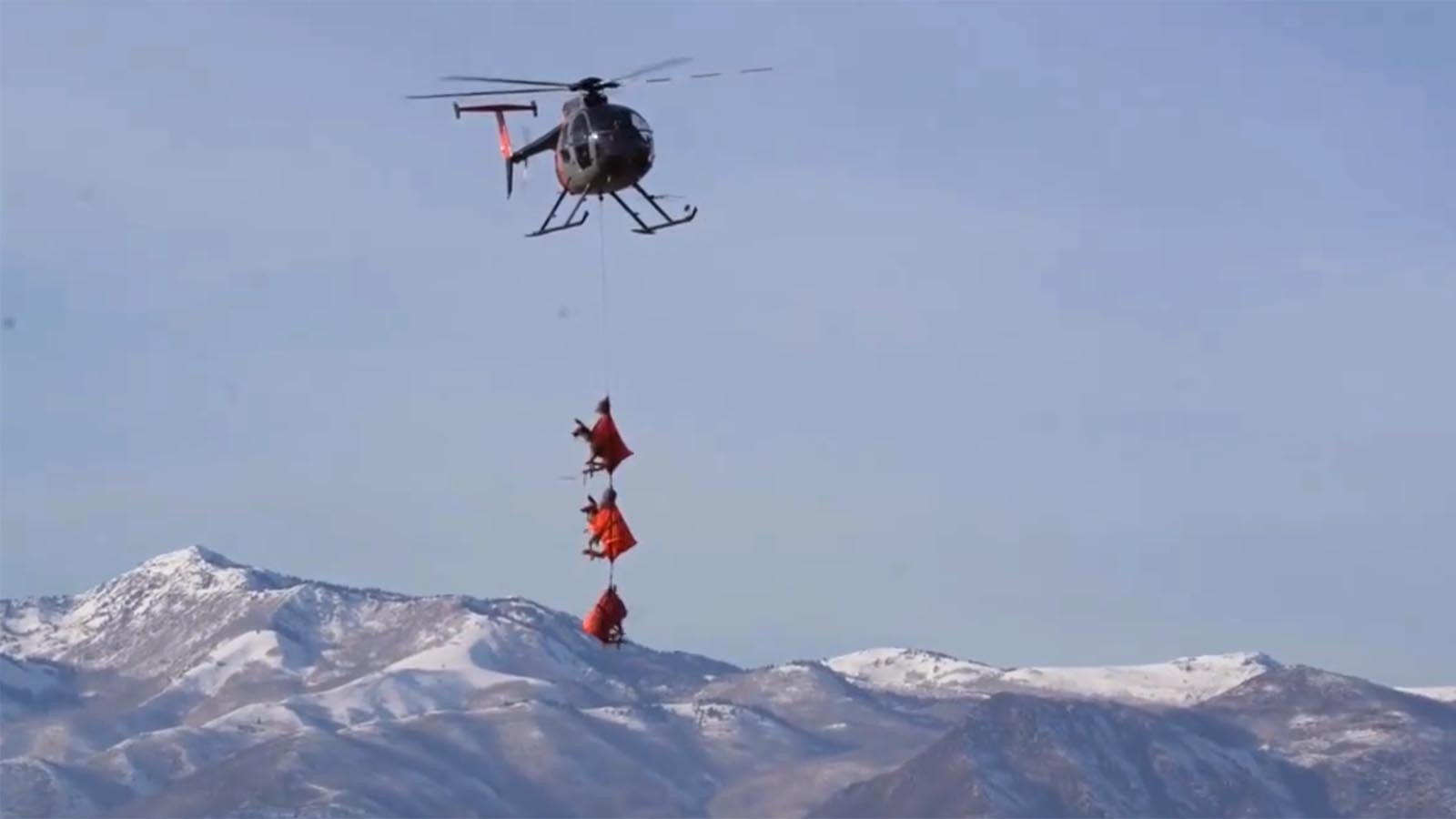Wildlife researchers frequently move deer by slinging them under a helicopter, which means Santa doesn’t have an exclusive on flying critters.
But unlike Rudolph, Prancer and Vixen, Wyoming’s flying deer need a little help. They must be netted from the air, and then tackled by a hardy soul called a “mugger,” Shawn Blajszczak of Powell told Cowboy State Daily on Thursday.
Blajszczak is the Wyoming regional director of the Mule Deer Foundation and a former Wyoming Game and Fish Department warden.
Santa’s Reindeer?
A recent video of wildlife managers in Utah shows three deer tucked in slings catching a ride below a helicopter and gently set down before wildlife agents approach them. The video is jokingly titled “Rudolf Auditions in Utah?” But it’s explained that it was part of a deer migration study.
Wyoming Game and Fish sometimes uses the same method, said Blajszczak, who was involved similar operations during his tenure with the agency.
Deer are moved to central locations, where researchers can check them for disease, take biological samples and sometimes outfit them with radio collars for movement and migration studies, he said.
The deer in the video are blindfolded, which Blajszczak confirmed also is normal procedure. Blindfolds held keep wild animals from panicking in unnatural and stressful situations – such as terrestrial critter flying.
“Any time you can blindfold an animal, it helps calm them down,” he said.
Flying Kiwis
The helicopter flight and capture crews typically aren’t agency employees, but private contractors, Blajszczak explained.
And they’re often from New Zealand. That’s because capturing and moving livestock with choppers is common practice in that country. It also involves some serious daring do.
“Most of those guys are Kiwis,” he said. “It’s extremely dangerous work.”
Here Comes The Mugger
Crews usually capture the deer by flying over a herd, selecting targets and then shooting nets over them, Blajszczak said. The nets are weighed on their corners.
Once a deer is netted, the pilot goes low or sets down, and then it’s up to a crew member called “the mugger” to leap out and go after the deer.
It’s the mugger’s job to tackle and hog-tie the deer. Then the animals can be blindfolded and put into the slings for transport, Blajszczak said.
After wildlife agents finish their work, the deer are either set free right away or flown back to the original capture site and released there.
Mark Heinz can be reached at mark@cowboystatedaily.com.





